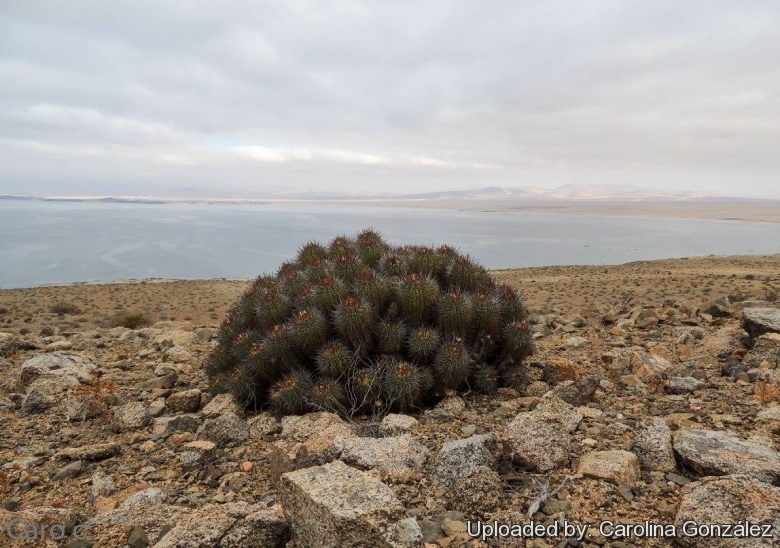
Copiapoa marginata Photo by: Carolina González
Habit at south of Caldera.
Origin and Habitat: (Copiapoa marginataSN|1412]]SN|1412]] is endemic to Chile, where it occurs in the coastal hills in southwest Caldera and Morro Copiapó and in the northern part of National Park Pan de Azúcar, north Chañaral. This species has an extent of occurrence of 5,000 km2, there are probably more than 10 locations. The species is widespread but not abundant and the groups of individuals are scattered. The highest density is observed in Morro Copiapó. (Copiapoa marginataSN|1412]]SN|1412]] is the most northerly species of this genus). The species occurs within the National Park Pan de Azúcar.
Type locality: Morro Copiapó.
Elevation range: It grows from near sea level to to 700 metres above sea level (lomas costeras). It occurs mainly in Morro Copiapó, a hill southwest of Caldera that is near to being a "desert island", the west side adjoins sea cliffs and the lad side faces a flat plain (Graham 1998). The populations have significant numbers of dead individuals, the experts are not sure why but they suspect an overall population decline. The major threat is illegal collection, and it is suspected that the collection at the national level is increasing as there are more people interested in the plants. Global climate change is a potential threat, as recent droughts seem to have affected the population.
Synonyms:
See all synonyms of Copiapoa marginata
Common Names include:
SPANISH (Español): Copiapoa de Bridges
Description: Copiapoa marginataSN|1739]]SN|1412]] is a short columnar clump-forming cactus flowering when quite small. This species varies considerably in cultivation from native habitat. In nature, the bodies are dark dirty-grey-green, with leached white spines and the apexes of stems are filled with soft brown wool. When grown in pots, this plant tends to have darker spines on most of the body, with white spines only appearing on the oldest areoles at the bottom of the plant. In cultivation the wool remains on the areoles (as long as water is kept off the top) giving the whole plant a fuzzy top.
Taxonomic note: Copiapoa marginataSN|1412]]SN|1412]] is the plant that was chosen as the type species of the genus when it was created by Britton & Rose. It is however a very confused and controversial name and for some 60 years, the true identity of Copiapoa marginataSN|1412]]SN|1412]] was the source of contention and discussions until Ritter designated the plants from Morro Copiapó as the neotype, but still now some of the plants in cultivation with that name would seem to be forms of Copiapoa calderanaSN|1412]]SN|1739]].
Habit: Plants, simple or growing in clusters of 2 to 9, usually erect, but when old spreading with ascending tips.
Root: It ha a short taproot.
Stems: Sub-cylindrical or ellipsoid (narrowed towards the top and the base), ribbed, arising from a short woody tap-root, 20-60 cm long and, about 7-12 cm in diameter, dirty grey to light green in cultivation, with domed crown, and top of flowering stems filled with masses of soft brown hairs. This appears to be a variable species.
Ribs: 8 to 14 (usually 10), low, broad and abtuse, rounded off towards the top but flattened nearer the base, separated by broad intervals and scarcely tuberculate.
Areoles: Large, broad, almost round, approximate, the adjoining ones usually touching. Young areoles filled with soft brown or black felted wool.
Spines: 5 to 10, unequal, subulate, stout all stiff and straight black becoming grey with age.
Central spines Single or up to 3, the longer one 3-4 cm long, stoutly subulate, straight-protecting. Under the magnifying glass they are seen to be marked with faint lines.
Radial spines: 5 to 10, spreading outwards, more or less standing out in a radiating manner, subulate, stout, rigid, straight, 1-1,5 cm long, stout, nearly straight, at first chocolate brown, afterwards becoming greyish; The lower-most, more strongly growing, are
Flowers: At the apex, diurnal closing at night, with odour, protracting the period of opening many days, small, 2,5-3,5 cm. long; outer perianth segments broad, obtuse, upright, acute-lanceolate, pointed and with red tips; inner perianth segments yellow upright, obtuse, with a very short terminal point. Stamens included. The crowded filaments as well as the anthers are yellowish; the style is thick and hollow, the eleven stigma lobes yellow.
Blooming season: Spring and summer
Fruits: Naked, small, 8-10 mm long, green or tinged red.
Seeds: Black, shining 1 x 0,77 mm.
Bibliography: Major references and further lectures
1) N. L. Britton, J. N. Rose “The Cactaceae. Descriptions and Illustrations of Plants of the Cactus Family.” Volume 4, The Carnegie Institution of Washington, Washington 1923
2) Edward Anderson “The Cactus family” Timber Press, Incorporated, 2001
3) Riha & Subik. “The illustrated encyclopedia of cacti and other succulents” (edited by G. & K.A. Beckett) 1981
4) Brickell, Christopher (1996). “Gardener's Encyclopedia of Plants & Flowers.” Colour Library Books. p. 443. ISBN 1-85833-472-1.
5) James Cullen, Sabina G. Knees, H. Suzanne Cubey “The European Garden Flora Flowering Plants: A Manual for the Identification of Plants Cultivated in Europe, Both Out-of-Doors and Under Glass” Cambridge University Press, 11/ago/2011
6) David R Hunt; Nigel P Taylor; Graham Charles; International Cactaceae Systematics Group. "The New Cactus Lexicon" dh books, 2006
7) Pfeiffer & Otto “Abbildung und Beschreibung Bluehender Kakteen” 2: t. 30 1850
8) Graham Charles “Copiapoa” Cirio Pub. Services, 1999
9) Friedrich Ritter - Kakteen in Südamerika (Ergebnisse meiner 20jährigen Feldforschungen) 1980
10) Guerrero, P., Faundez, L., Saldivia, P., Walter, H.E. & Avilés, R. 2013. Copiapoa marginata. The IUCN Red List of Threatened Species 2013: e.T152822A682718. http://dx.doi.org/10.2305/IUCN.UK.2013-1.RLTS.T152822A682718.en. Downloaded on 03 April 2016.
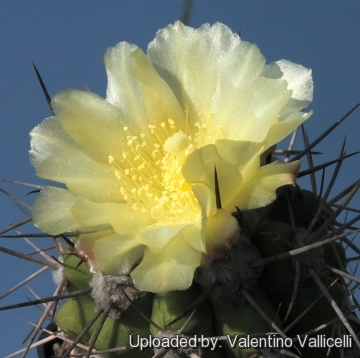 Copiapoa marginata Photo by: Valentino Vallicelli
Copiapoa marginata Photo by: Valentino Vallicelli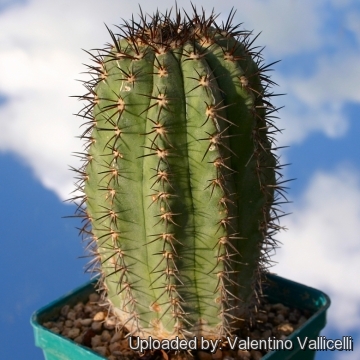 Copiapoa marginata Photo by: Valentino Vallicelli
Copiapoa marginata Photo by: Valentino Vallicelli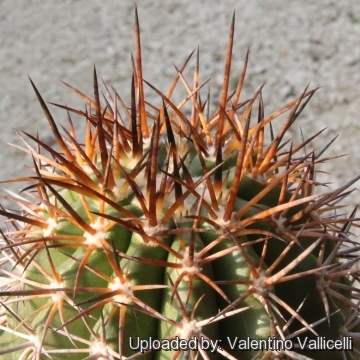 Copiapoa marginata Photo by: Valentino Vallicelli
Copiapoa marginata Photo by: Valentino Vallicelli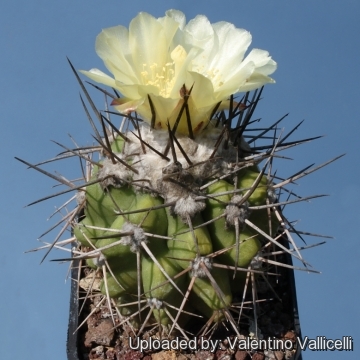 Copiapoa marginata Photo by: Valentino Vallicelli
Copiapoa marginata Photo by: Valentino Vallicelli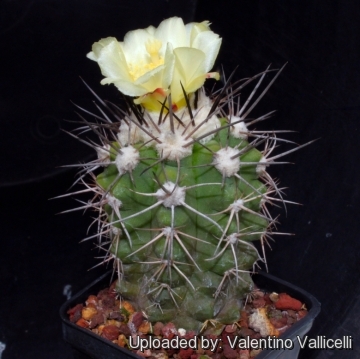 Copiapoa marginata Photo by: Valentino Vallicelli
Copiapoa marginata Photo by: Valentino Vallicelli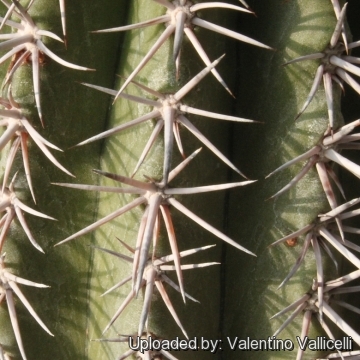 Copiapoa marginata Photo by: Valentino Vallicelli
Copiapoa marginata Photo by: Valentino Vallicelli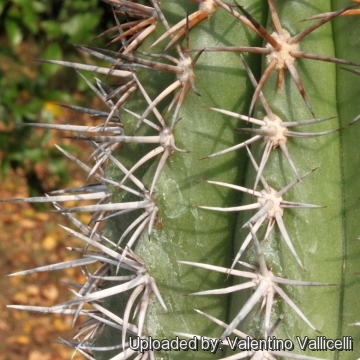 Copiapoa marginata Photo by: Valentino Vallicelli
Copiapoa marginata Photo by: Valentino Vallicelli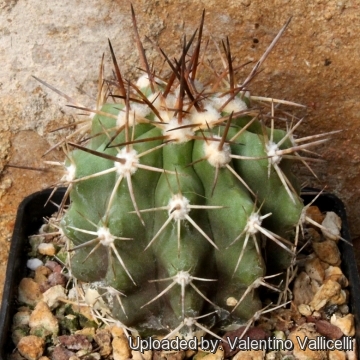 Copiapoa marginata Photo by: Valentino Vallicelli
Copiapoa marginata Photo by: Valentino VallicelliCultivation and Propagation: Considering that Copiapoa marginataSN|1412]]SN|1412]] comes from a habitat with an extremely arid climate, they are remarkably tolerant of pot culture. These plants have thick taproots and are susceptible to overwatering. They requires also an appropriate air circulation. Copiapoas are summer grower species easy to cultivate
Growth rate: This is a slow growing cactus kept for the beauty of its form that will make clumps given the best conditions.
Soils: It likes very coarse mineral cactus mix soil, but can become too elongated if compost is too rich.
Repotting: Use pot with good drainage.
Watering: It requires light but regular waterings in summer, but let the soil mix dry between waterings, but do not overwater (Rot prone), it must be strictly kept dry throughout the winter quiescent period since it is very sensitive to any moisture excesses keep dry in winter.
Fertilization: Feed with a high potassium fertilizer in summer.
Hardiness: Not highly tolerant of a great deal of frost.They need to be kept in a cool place during winter rest and are resistant to light frost if kept on the dry side prior to, and during, cold weather ( they are hardy to -2 C ° C short periods). However some warmth throughout the year will increase the grower's success (minimum 5° to 10°C during rest season).
Exposition: Requires full sun or light shade and careful watering to keep plant compact with strong coloured spines. Tends to bronze in strong light, which encourages flowering and heavy spine production. Light shadow my be useful in the hottest summer days.
Uses: It is an excellent plant for container growing. It always looks good and stays small. It look fine in a cold greenhouse and frame or outdoor in a rockery.
Pests & diseases: It may be attractive to a variety of insects, but plants in good condition should be nearly pest-free, particularly if they are grown in a mineral potting-mix, with good exposure and ventilation. Nonetheless, there are several pests to watch for:
- Red spiders: Red spiders may be effectively rubbed up by watering the infested plants from above.
- Mealy bugs: Mealy bugs occasionally develop aerial into the new growth among the wool with disfiguring results, but the worst types develop underground on the roots and are invisible except by their effects.
- Scales: Scales are rarely a problem. It is wise to treat your whole collection with a systemic insecticide twice a year in spring and autumn.
- Rot: Rot is only a minor problem with cacti if the plants are watered and “aired” correctly. If they are not, fungicides won't help all that much. To prevent rottenness it is also advisable to surround its root neck by very rough sand or grit, this help a fast water drainage.
Propagation: Seeds (or offsets if available), Grafting is often used to speed growth rate and to create a back-up to plants in collection. Seeds germinate in 7-14 days at 21-27° C in spring, remove gradually the glass cover as soon the plants will be well rooted (ca 1-2 weeks) and keep ventilated, no full sun for young plants!
Your Photos
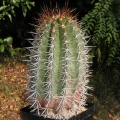
by Valentino Vallicelli




















